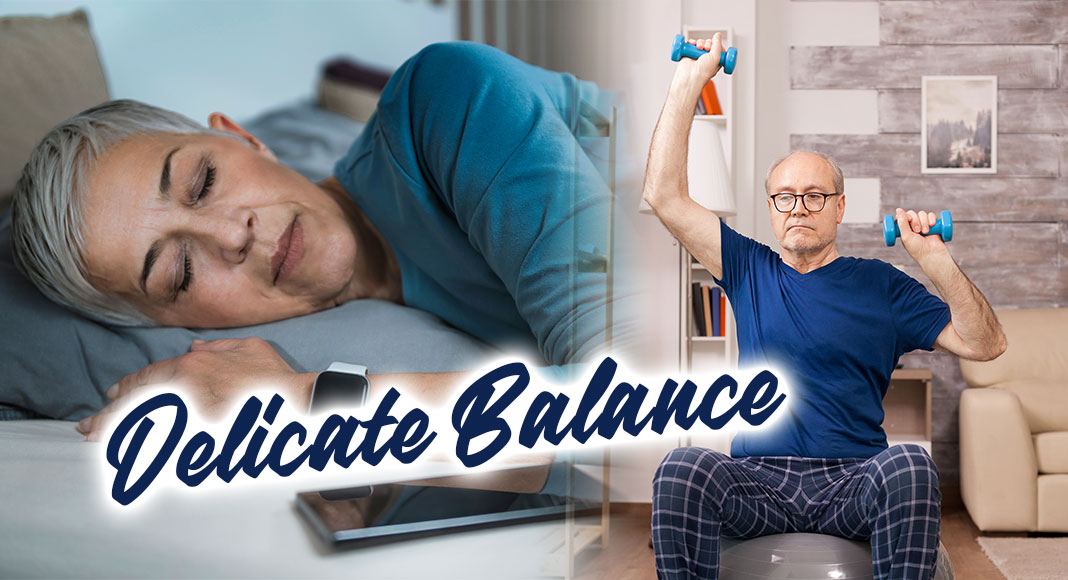
Mega Doctor News
Newswise — It may shoot through the hands while typing or flare in the knees when getting out of the car. Wherever the pain, over 32 million Americans living with osteoarthritis experience it.
To reduce that pain, patients living with the degenerative joint disease are often told to exercise.
It sounds simple.
But people with osteoarthritis may experience pain when they start to move more, which can be a deterrent to taking up, or sticking with, an exercise program.
“Pain during movement is an important reason why this population isn’t more active, and we need to identify ways we can help to change this,” said Daniel Whibley, Ph.D., research assistant professor of physical medicine and rehabilitation at Michigan Medicine. “Otherwise, they may end up in a loop of pain and inactivity that we know can lead to disability later down the line.”
A growing body of research suggests that maintaining good sleep health – specifically good quality sleep for an appropriate duration – in patients with osteoarthritis may reduce pain. There is also strong evidence supporting links between sleep and being physically active.
“If you’re sleeping well, you’re more likely to be able to move more the next day or stick with a planned exercise program,” Whibley said. “And those who are physically active during the day are more likely to get a good night’s sleep.”
Whibley’s team looked to develop a new intervention that brought together insights from previous research that supports these relationships.
“There are many different physical activity or exercise programs for people with osteoarthritis, but they spend relatively little time on sleep,” he said. “Conversely, some researchers have started to investigate the effectiveness of cognitive behavioral therapy, the process of rooting out problematic thoughts and changing cognitive patterns, for insomnia as a way of reducing osteoarthritis-related pain.”
What hasn’t been investigated is whether intensively and simultaneously targeting both sleep and physical activity – and the optimal balance between them – results in better pain outcomes. Alongside a team of researchers, Whibley introduced the concept of a hybrid sleep-exercise program to two focus groups composed of people living with osteoarthritis-related pain and sleep disturbances.
The sleep improvement component involves an automated program called Sleepio, which delivers cognitive-behavioral therapy for insomnia over the internet, as well as components focused on sleep education and behavioral modifications to sleep routines. In tandem with the six-week Sleepio course, users complete an exercise program with remote weekly support from a program coach.
During the focus groups, researchers explained the outline plan for the hybrid program and encouraged discussion between participants about how best to adapt design and delivery plans. These discussions informed the development of prototype materials which were then shared and refined with the same study participants at a second round of focus groups held a month later.
The findings, published in the British Journal of Pain and supported through Versus Arthritis and the Dan Barry Research Program, reveal that motivational language, personal accountability and accessible educational materials are important features to include in a successful program for sleep and exercise for osteoarthritis-related pain.
“The participants wanted to be encouraged to stick to the sleep and exercise components of the program using terms void of negative associations that made it seem like punishment,” Whibley said. “They also wanted to share records of activity with health care professionals without feeling like they have no power in the dynamic.”
These features, however, also present parallel challenges.
Previous negative interactions with health care providers – like feeling patronized or underestimated – and being asked to excessively record sleep and daily physical activity may cause people using the program to feel disinterested or discouraged, said Anna Kratz, Ph.D., a co-investigator on the study and associate professor of physical medicine and rehabilitation at Michigan Medicine.
“Developing an understanding of what factors may present barriers to engaging with the program was a primary reason to conduct the focus groups,” Kratz said. “In response to our findings, we were then able to create intervention materials that would be more attractive to potential users, including a workbook that supports adaptation of intervention content for the individual using it – they can set their own activity or sleep goals and keep track of their progress.”
A test of the program’s feasibility is currently underway with a small group of people living with osteoarthritis. Once complete, the team will conduct a full trial. The results, Whibley hopes, will provide more insight into the relationship between sleep, physical activity and exercise, and how their balance can impact pain in this population.
“People living with osteoarthritis want to improve their sleep, physical activity and exercise behavior and reduce their pain – all of these are valued outcomes,” Whibley said. “I’m not saying this new program will be a magic bullet for everyone, but I think the hybrid approach holds great potential for the future of osteoarthritis-related pain management.”











